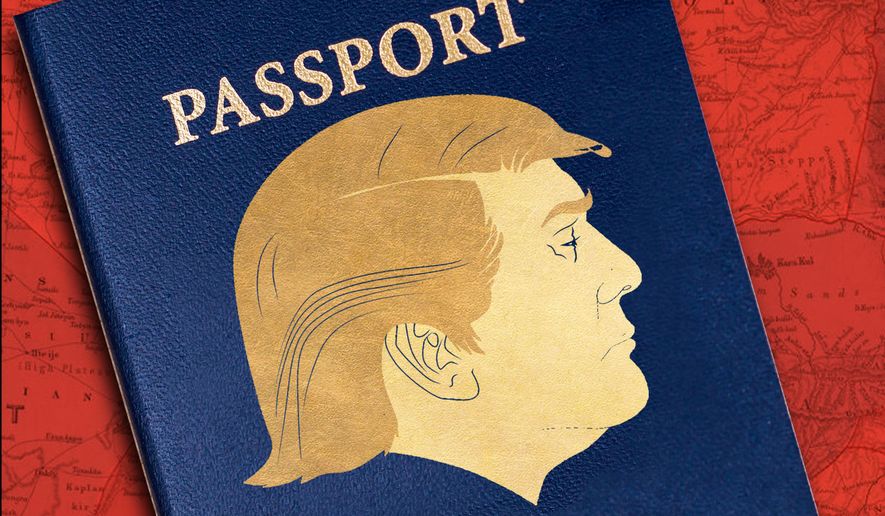OPINION:
Central Asia and the Caucasus have recently attracted American attention. Wabtec and Boeing have announced multibillion-dollar investments in Kazakhstan and Uzbekistan, respectively, and groups of American investors have descended on every country in the region.
Meanwhile, with rare exceptions, the eight regional states are initiating border and visa reforms that facilitate trade and investment and advance regional connectivity. Parallel with this, the modernization of Soviet-era educational systems, improved communications and freer travel have brought forth a generation of men and women who speak English and have embraced modernity in all its aspects. In the process, they have thrown off the lingering legacy of a century and a half of Russian domination.
Central Asia and the Caucasus should be as much an American concern as the Baltic or Black Sea regions. Russian ruler Vladimir Putin and his Russian chauvinists, consumed by an “imperial hangover,” still consider them part of Moscow’s exclusive zone of privilege. Meanwhile, China covets the region’s vast wealth in oil, gas and critical minerals and is moving rapidly to gain dominance. Beijing has long since established itself as the largest investor across this vast territory and is racing to dominate trade, information, education, exchanges and security. To the extent it succeeds and bends regional states to its will, Beijing will have established a solid belt of authoritarian regimes stretching from North Korea to the Persian Gulf.
Despite a few demarches since the collapse of the Soviet Union, the United States has largely ignored Central Asia and the Caucasus. No president has visited Central Asia. From the collapse of the Soviet Union to 2023, no U.S. president has met with his counterparts as a group. When Washington finally established regular consultations with the five Central Asian presidents, it did so at the instigation of Kazakhstan, not the White House.
Meanwhile, Hu Jintao and Xi Jinping have crisscrossed the region many times, and Mr. Putin makes sure to be a frequent guest there.
All countries in the region still squirm under Congress’ grossly outdated Jackson-Vanik amendment to the Trade Act of 1974, which sought to punish countries that did not offer free emigration, especially to Jews. Though largely ignored today, this relic of the Soviet era is still on the books as an irritating monument to congressional disinterest and neglect.
Now is the opportune moment for President Trump to visit the region because of the rapid expansion of American investments across Central Asia and Mr. Trump’s role in resolving part of the vexing problem of conflict between Azerbaijan and Armenia.
Most important, while Mr. Putin continues his brutal war against Ukraine and threatens NATO members in the Baltic and Black Sea regions, he is equally focused on Central Asia and the Caucasus. Both are essential parts of his delusional but dangerous dream of reconstituting Russia as an empire.
How can the U.S. indicate that it understands Mr. Putin’s grand strategy and will not allow him to impose his imperial hangover on others? The tide of new American investments serves this end, as do the many contacts in the spheres of education and culture. However, these diverse projects all take place without an overarching strategy or capstone. A presidential visit is the simplest, most direct, least expensive way to accomplish this. Postponed by Republicans and Democrats for 34 years, such a visit would send a clear signal that America is well aware of countries on both sides of the Caspian Sea (“Greater Central Asia”) and supports their efforts to develop as independent and modern states with free markets and respect for human rights.
With eight states involved, five in Central Asia and three in the Caucasus, where should Air Force One briefly touch down? Three countries should top the list: Kazakhstan and Uzbekistan, co-leaders of the movement to consolidate the region, and Azerbaijan, the most dynamic economy in the Caucasus and the main driver for cross-Caspian linkages.
The purpose of such visits would be to publicly acknowledge America’s awareness of the region, foster further economic, cultural and security ties, and launch interactions leading to a U.S. strategy that is regionwide in scope, not just country by country.
This is the right moment for the White House to take such an initiative. Moscow and Beijing will interpret further delay as evidence of Washington’s continuing disinterest and an invitation for them to raise the stakes. Regional states will conclude that they remain on Washington’s back burner and will make whatever accommodations they deem necessary. By its inaction, the U.S. will have acceded to the creation of a vast band of states from North Korea to Iran that are dominated by Beijing’s strategies and whims.
• S. Frederick Starr is a distinguished fellow for Eurasia at the American Foreign Policy Council, founding chairman of the Central Asia-Caucasus Institute and a research professor at Johns Hopkins University School of Advanced International Studies.




Please read our comment policy before commenting.